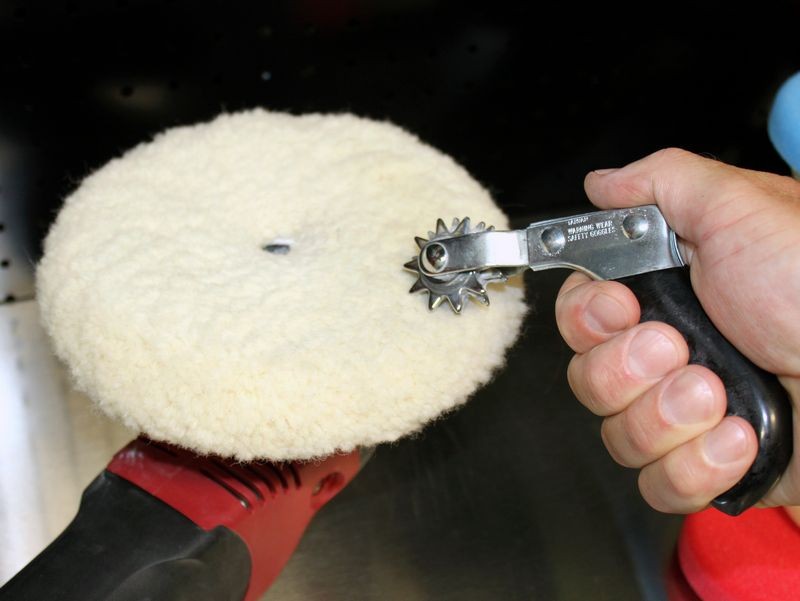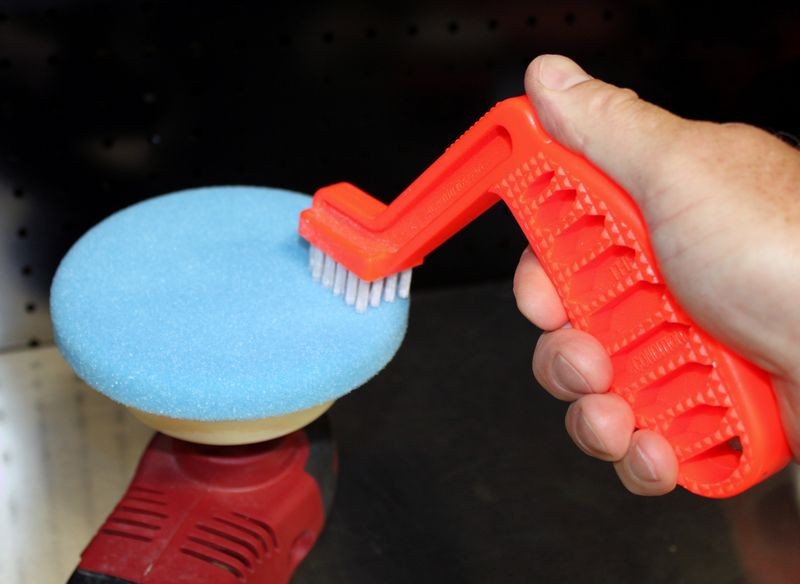Here's something I've written on the topic of
ample amount from this thread, although this thread is about using a DA Polisher, the info about how much product to use or not to use still aplies...
The Definitive How-To Article for Removing Swirls, Scratches and Water Spots Using a Porter Cable 7424XP, G110v2 or Griot's Garage Polisher
Use an ample amount of product
When we say use an ample amount of product this means don’t use too much product and don’t use to little product.
Too much product
If you use too much you can hyper-lubricate the surface and this will make it more difficult for the abrasives to abrade the surface as they’ll tend to want to glide or slip over the surface instead of bite into the surface.
To little product
If you use too little product there won’t be enough lubrication to enable the buffing pad to rotate and thus engage the abrasives against the surface so they can bite into and remove small particles of paint.
Learning how much product to use varies with manufactures products as there’s a lot of variables involved. The best teacher is experience coupled with any hands-on training you can find. Watching a video or asking questions on a detailing discussion forum like the
Autogeek Online Detailing Forum is a great resource for this kind of information.
Also, when you’re first starting out with a dry pad, (doesn’t matter so much if it’s new or used as long as it’s clean), the pad will tend to absorb some of the initial product applied to it or picked up off the surface. As you continue to buff and the pad becomes more wet or saturated with product a couple of things will take place:
You’ll find you’ll need less product to work a section. As the pad becomes wet with product, the combination of liquid and foam will tend to absorb and dissipate the power provided by the motor. This will show up as a reduction in the ability of the tool to keep the pad rotating under pressure. Then if you apply more pressure the free floating spindle assembly will do it's job and the pad will stop rotating. The fix for this is to clean your pad often, which we will address below and/or switch to a fresh, clean, dry pad and continue switching to clean dry pads as you work around the car and your products become wet with product.
Of course the ability to swap out pads means having a collection of pads in your arsenal to start with depending upon your budget and how much you value your time. Simply put, dry pads rotate against the paint better than wet pads, so it’s faster to buff out an entire car by swapping out wet pads for dry pads versus trying to buff the entire car out with only a few pads.
New generation DA Polishers like the PC 7424XP and the Meguiar’s
G110 offer more power than their predecessors and this is their strong point because it’s this extra power that will keep your pads rotating better even after they become wet with product. This one feature alone makes them worth choosing over earlier dual action polishers and/or upgrading.
Here's some more on the topic of ample amount...
How much product do I use with my DA Polisher?
Use an "ample" amount of product
When I say use an
ample amount of product this means don’t use too much product and don’t use to little product.
From The Free Dictionary.com
am·ple
adjective
1. Of large or great size, amount, extent, or capacity: an ample living room.
2.
a. Large in degree, kind, or quantity: an ample reward.
b. More than enough: ample evidence.
3. Fully sufficient to meet a need or purpose: had ample food for the party.
Out of the above definitions, I'm using the 3rd definition.
Using too much product
If you use too much you can hyper-lubricate the surface and this will make it more difficult for the abrasives to abrade the surface as they’ll tend to want to glide or slip over the surface instead of bite into the surface.
Using too little product
If you use too little product there won’t be enough lubrication to enable the buffing pad to rotate and thus engage the abrasives against the surface so they can bite into and remove small particles of paint.
You want an AMPLE amount of product when first starting out because you pad is dry and some of the product is going to seep into the pad leaving less on the surface to LUBRICATE and ABRADE the paint.
Cut down on the amount of product AFTER pad is broken-in...
After your pad is broken in with product, clean your pad after each section pass and when you apply fresh product you can cut down on the amount of product you actually apply to the face of your pad.
:xyxthumbs:





